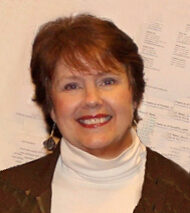
Nancy Huntting, Aesthetic Realism consultant, writes:
Every person who wants to understand herself or himself, and our nation, and ethics—and who wants to feel excited and hopeful about all these—should read “America & Every One of Us,” the new issue of The Right of Aesthetic Realism to Be Known!
The commentary by Ellen Reiss begins:
Dear Unknown Friends:
Here is the conclusion of the lecture What Was Going On, which Eli Siegel gave in 1975. It is great in its understanding of America, economics, and what the human self is looking for. He is discussing an article in the bicentennial issue of Fortune magazine: “Reshaping the American Dream,” by Thomas Griffith. And as he does, he is commenting too on what he began to explain five years earlier: that a way of economics based on contempt for human beings had reached the point at which it could no longer succeed.
Economics impelled by the profit motive—the looking upon one’s fellow humans as means for one’s fiscal aggrandizement—had been the way of the world for centuries; but, Mr. Siegel showed, by the 1970s it was no longer faring well and never would again. It might be forced to stagger on awhile, but would do so through making life increasingly painful. And that is what has happened these decades—with, for instance, more and more people becoming poorer, struggling to pay for food and a place to live.
Mr. Siegel showed that now the only way an economy can succeed is by having a basis different from anything that was before, a basis that is ethics and aesthetics—in keeping with this principle: “All beauty is a making one of opposites, and the making one of opposites is what we are going after in ourselves.” That is: we need to be in process of learning that the opposites of care for self and justice to the world not ourselves are one. We need to learn about this for our personal happiness, but also for our nation to have a truly workable economy.
Patriotism & More
The article Mr. Siegel discusses is an attempt to present the America of then, as the article’s author sees it. Mr. Siegel disagrees fundamentally with that writer, though he speaks of the article and Thomas Griffith with respect. Here are some notes about subjects in this concluding section:
1) Mr. Siegel refers to “the beginning matter in ethics.” That beginning matter is: How should a person be seen? and How should the world be seen—and owned?
2) A term used often in the article is institutions, and so Mr. Siegel comments on it throughout the lecture. In this section he does so in relation to a subject present with much intensity now: immigration.
3) The subject of patriotism is in this final section too. And I love how Eli Siegel sees it and speaks about it: what he says is at once scientific and replete with feeling.
4) In the paragraph just above the subtitle “The Best Thing” and in the paragraph just after, and beginning with the phrase “The best thing about…,” Mr. Siegel speaks about this nation in a way I find thrilling—a way that makes for tears. He was the greatest of critics, and the purpose of a critic is to see not only what might be amiss but what is good, what is beautiful. He was a critic of America, as he was of a poem or person. And here, he sees something beautiful in America that the Fortune writer does not see, and he describes it with exactitude, tenderness, and pleasure that have become powerful prose style….Read more